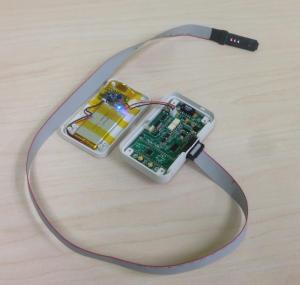Current projects
Closed-loop control of Anesthesia: iControl
Automatic control of drug dosing and delivery schedules can improve therapy by reducing drug usage and costs, by permitting health care staff to work more efficiently and to provide better standard of care. It allows the safe use of drugs that are difficult to administer, and by compensation for human failings with computer strengths, such as unlimited attention span and patience, and capacity for quick, accurate and redundant calculation. Our goal is to develop an automatic control system for anesthesia and to demonstrate its efficacy, safety and benefits in an operating room. We will focus on the deployment of new sensors optimized for controlled drug delivery, robust control methodology, extensive clinical validation, and aim to provide a mathematical guarantee of the safety of patients under anesthesia.
Development and Testing of a Combined NIRS/EEG System for Infants
We are developing and pilot testing an integrated NIRS/EEG system for preterm infants. This system will improve neonatal clinical care and mobilize further research in several important ways. The system will increase the accuracy of measuring infant stress or pain, and will allow for the evaluation of optimal pain and stress management. In this way, infants will be afforded the best brain-protective care, aimed at promoting healthy life trajectories by preventing the negative life-long developmental consequences of early repeated exposure to pain and stress.
Development of a low-cost NIRS device
 We are currently developing a low-cost portable Continuous Wave Spatially Resolved (CW-SR) Near Infrared Spectroscopy (NIRS) device that can be controlled by smartphone or personal computer and the related software applications. NIRS is an optical technique that uses light in the near-infrared spectrum in order to measure non-invasively the concentration of oxygenated and deoxygenated haemoglobin in tissues. This technology can allow us to assess tissue level oxygenation and end-organ perfusion in a variety of tissues and for different clinical applications. The goal of this project is to make monitoring of tissue oxygenation level available worldwide and in particular in middle and low-income countries for different clinical applications.
We are currently developing a low-cost portable Continuous Wave Spatially Resolved (CW-SR) Near Infrared Spectroscopy (NIRS) device that can be controlled by smartphone or personal computer and the related software applications. NIRS is an optical technique that uses light in the near-infrared spectrum in order to measure non-invasively the concentration of oxygenated and deoxygenated haemoglobin in tissues. This technology can allow us to assess tissue level oxygenation and end-organ perfusion in a variety of tissues and for different clinical applications. The goal of this project is to make monitoring of tissue oxygenation level available worldwide and in particular in middle and low-income countries for different clinical applications.